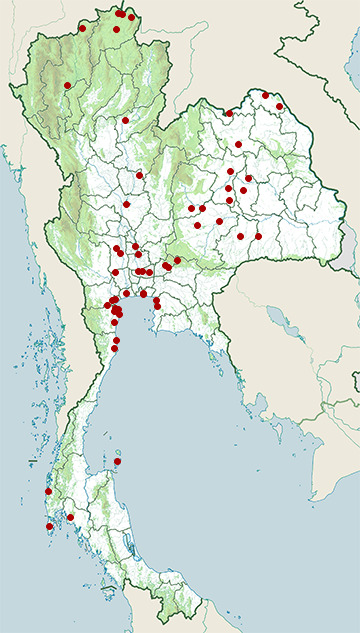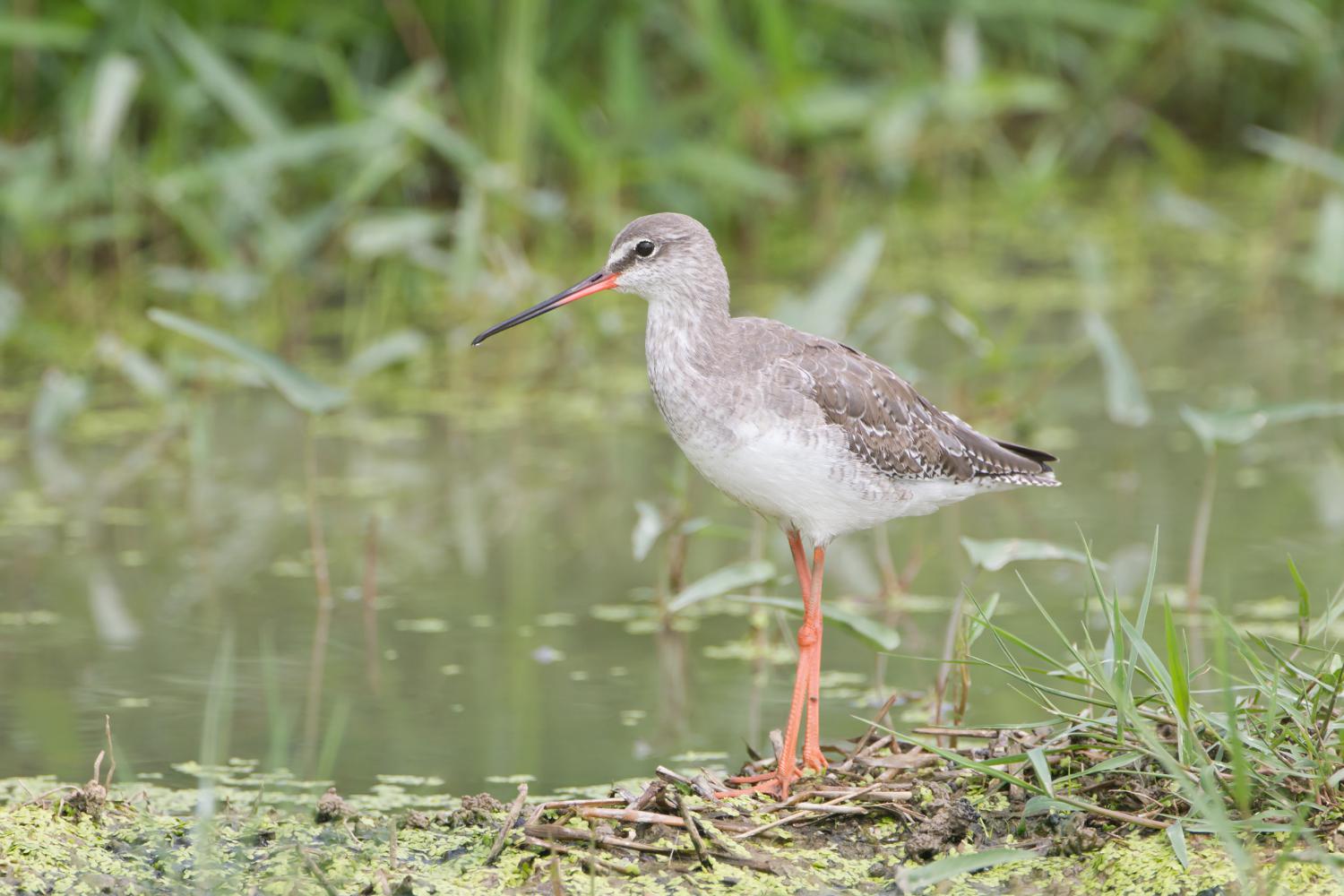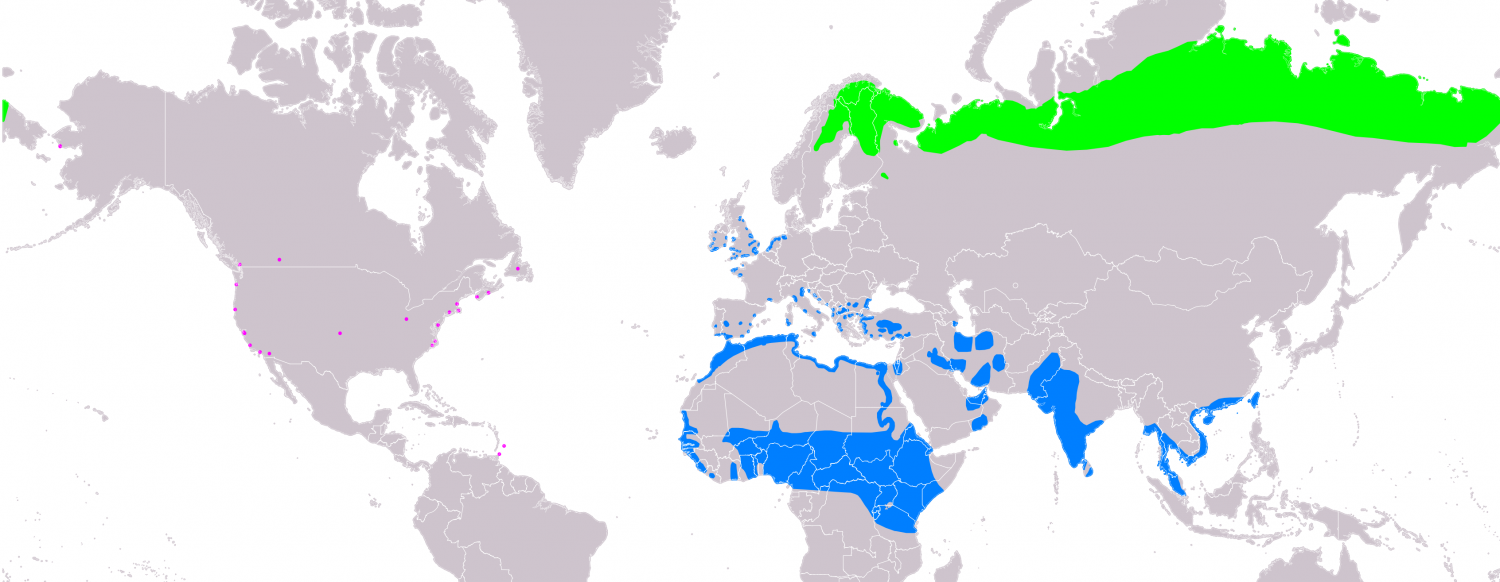Species of Thailand
Spotted redshank
Tringa erythropus
Peter Simon Pallas, 1764
In Thai: นกทะเลขาแดงลายจุด
The spotted redshank (Tringa erythropus) is a wader (shorebird) in the large bird family Scolopacidae. The genus name Tringa is the New Latin name given to the green sandpiper by Aldrovandus in 1599 based on Ancient Greek trungas, a thrush-sized, white-rumped, tail-bobbing wading bird mentioned by Aristotle. The specific erythropus is from Ancient Greek eruthros, "red", and pous, "foot".
It breeds across northern Scandinavia and the northern Palearctic and migrates south to the Mediterranean, the southern British Isles, France, tropical Africa, and tropical Asia for the winter. It is an occasional vagrant to Australia and North America.
Taxonomy
The spotted redshank was described by German zoologist Peter Simon Pallas in 1764 and given the binomial name Scolopax erythropus.
It is a monotypic species, with no recognised subspecies. Taxonomically, it forms a close-knit group with several other large Tringa species, with molecular sequencing showing it to be a sister clade to that containing the greater yellowlegs and the common greenshank.
Description
This is a large wader (shorebird), measuring 29 – 31 cm long, with a wingspan of 61 – 67 cm and a weight ranging from 121 to 205 g. It is black in breeding plumage, and very pale in winter. It has a red legs and bill, and shows a white oval on the back in flight. Juveniles are grey-brown finely speckled white above, and have pale, finely barred underparts.
Adults moult completely between July and October. In spring, the body plumage is moulted between March and May. Juveniles have a partial moult between August and February.
The call is a creaking whistle teu-it (somewhat similar to the call of a roseate tern), the alarm call a kyip-kyip-kyip.
Habitat and range
The spotted redshank breeds in the Arctic across much of the Palearctic, from Lapland in the west to Chukotskaya in the east.
Food and feeding
Like most waders, it feeds on small invertebrates.
Breeding
It nests on open boggy taiga, laying four eggs in a ground scrape. For breeding the bird moults to a black to dark grey with white spots. During breeding plumage the legs also turn a dark grey. See image alongside.
Conservation and threats
The spotted redshank is one of the species to which the Agreement on the Conservation of African-Eurasian Migratory Waterbirds (AEWA) applies.
This article uses material from Wikipedia released under the Creative Commons Attribution-Share-Alike Licence 3.0. Eventual photos shown in this page may or may not be from Wikipedia, please see the license details for photos in photo by-lines.
Category / Seasonal Status
Wiki listed status (concerning Thai population): Winter visitor
BCST Category: Recorded in an apparently wild state within the last 50 years
BCST Seasonal status: Non-breeding visitor
Scientific classification
- Kingdom
- Animalia
- Phylum
- Chordata
- Class
- Aves
- Order
- Charadriiformes
- Family
- Scolopacidae
- Genus
- Tringa
- Species
- Tringa erythropus
Common names
- English: Spotted redshank
- French: Chevalier arlequin
- Thai: นกทะเลขาแดงลายจุด
Conservation status

Least Concern (IUCN3.1)
Photos
Please help us review the bird photos if wrong ones are used. We can be reached via our contact us page.
Range Map

- Amphawa District, Samut Songkhram
- Ban Laem District, Phetchaburi
- Ban Lueam District, Nakhon Ratchasima
- Ban Phai District, Khon Kaen
- Bang Pahan District, Phra Nakhon Si Ayutthaya
- Bang Phra Non-Hunting Area
- Bang Pu Recreation Centre
- Borabue District, Maha Sarakham
- Bueng Boraped Non-Hunting Area
- Bueng Khong Long Non-Hunting Area
- Chaiyo District, Ang Thong
- Chatturat District, Chaiyaphum
- Chiang Khong District, Chiang Rai
- Chiang Saen District, Chiang Rai
- Doi Lo District, Chiang Mai
- Don Chedi District, Suphan Buri
- Fang District, Chiang Mai
- Huai Chorakhe Mak Reservoir Non-Hunting Area
- Kamphaeng Saen District, Nakhon Pathom
- Kantharawichai District, Maha Sarakham
- Khao Nang Phanthurat Forest Park
- Khao Sam Roi Yot National Park
- Khao Yai National Park
- Khao Yoi District, Phetchaburi
- Khlong Luang District, Pathum Thani
- Ko Samui District, Surat Thani
- Kumphawapi District, Udon Thani
- Kut Thing Non-Hunting Area
- Laem Pak Bia
- Mueang Chonburi District, Chonburi
- Mueang Khon Kaen District, Khon Kaen
- Mueang Krabi District, Krabi
- Mueang Nakhon Nayok District, Nakhon Nayok
- Mueang Nong Khai District, Nong Khai
- Mueang Phetchaburi District, Phetchaburi
- Mueang Samut Sakhon District, Samut Sakhon
- Mueang Samut Songkhram District, Samut Songkhram
- Mueang Suphanburi District, Suphan Buri
- Mueang Surin District, Surin
- Mueang Uttaradit District, Uttaradit
- Non Thai District, Nakhon Ratchasima
- Nong Bong Khai Non-Hunting Area
- Nong Song Hong District, Khon Kaen
- Pak Phli District, Nakhon Nayok
- Pak Thale
- Phimai District, Nakhon Ratchasima
- Phuket Province
- Pran Buri Forest Park
- Samut Prakan Province
- Takua Pa District, Phang Nga
- Thanyaburi District, Pathum Thani
- Wang Sai Phun District, Phichit
- Wat Phai Lom & Wat Ampu Wararam Non-Hunting Area
- Wiang Chai District, Chiang Rai

